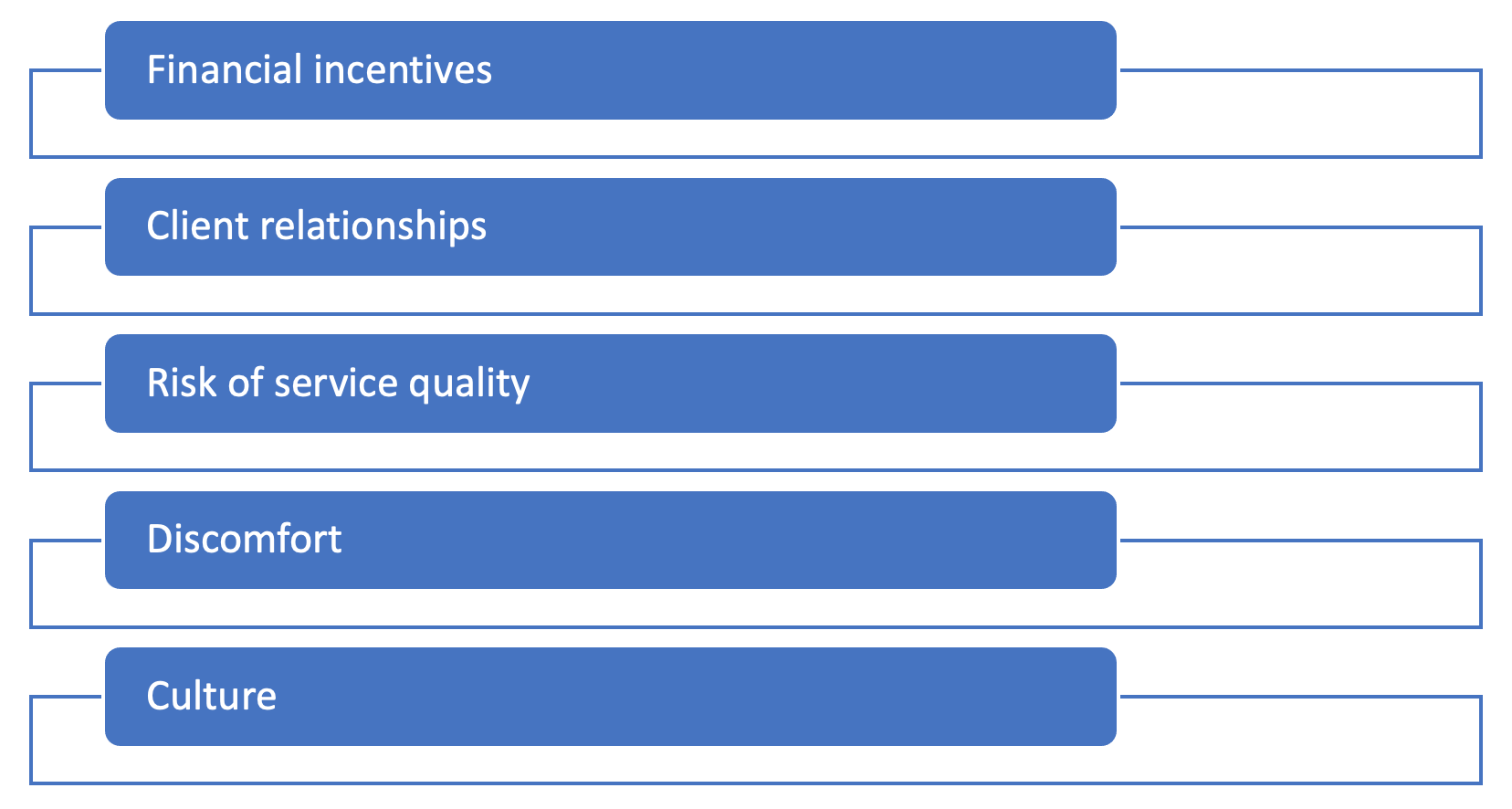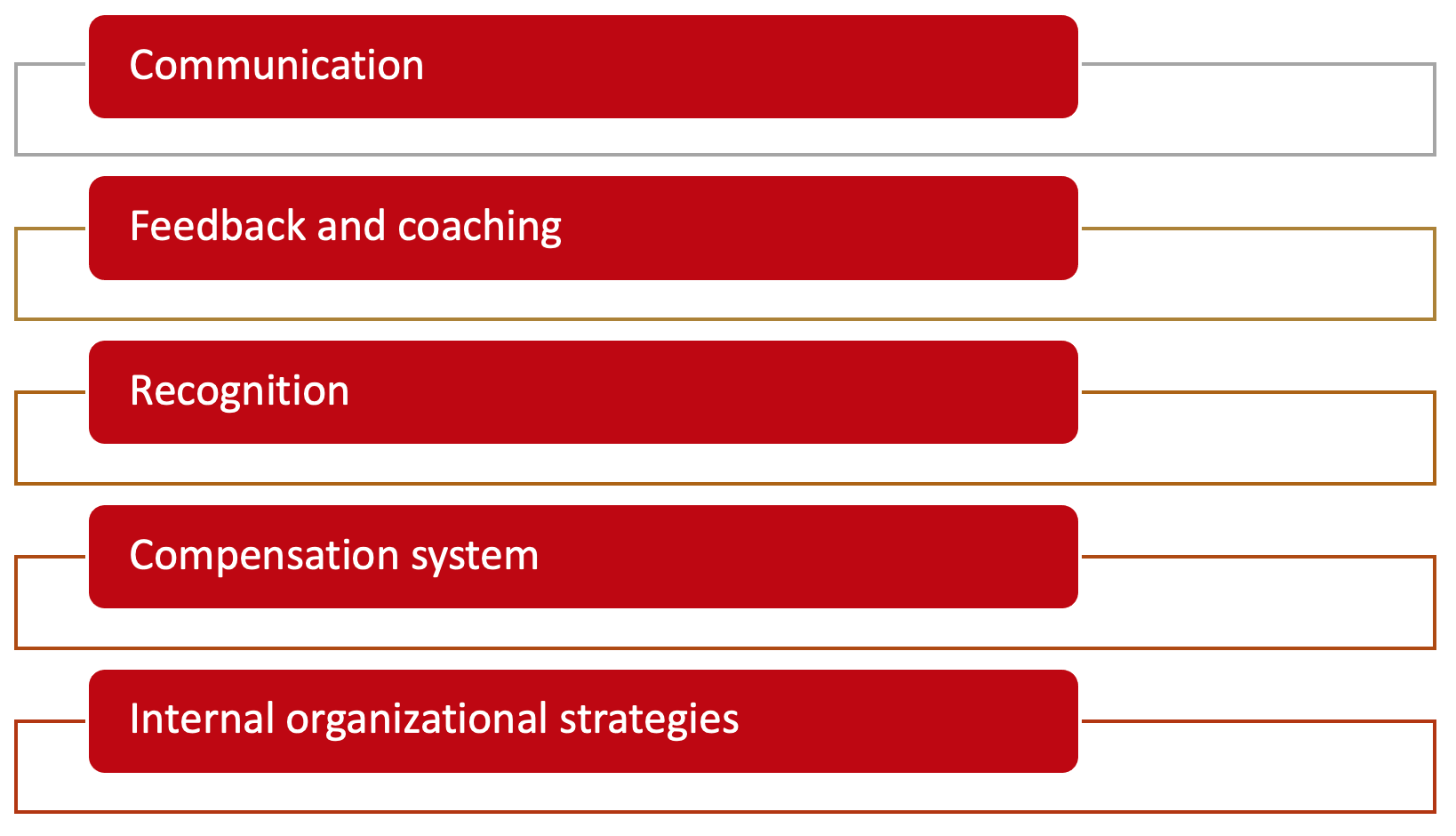The Challenge Of Collaboration

Clients are facing increasingly complex demands posed by the rapid advance of technologies, the economic and regulatory environment, the geographic spread and dynamic change within their markets and disruptive events, such as the current pandemic. Worse, many firms are less collaborative than they think they are.
The theme of three articles published over the last year1 was to address such client demands by taking a broader approach to business management, adopting an “integration agenda” and cultivating a collaborative environment. As a culmination to this theme, this article focuses on the challenge of generating internal collaboration.
It is a misnomer to think that collaboration is prevalent despite the fact than many lawyers, consultants and other professionals will relate that they do collaborate with each other. According to BTI2 “50% of top legal decision makers see lack of collaboration as their primary law firm’s biggest weakness – and is the primary reason they limit the work they give to these firms.”
Collaboration is clearly an underutilized asset. However, it is hard work because it requires bilateral effort and the benefits are less tangible – there is no empirical way of measuring results as there is, for example, for sales or project management. Furthermore, it is human nature to believe in oneself and avoid the risks of involving others.
The figure below summarizes what inhibits collaboration:

According to an Acritas survey3, the biggest barrier to collaboration according to lawyers was “no incentive” (23% of responses). This inevitably reflects the fact that financial incentives are often geared to individual performance in generating and delivering work or individual contributions to business and professional development. Even rewards that are based on group results motivate a team to be productive but not necessarily collaborate with other teams.
Take the practice group leader of a large law firm, mentioned in one of my earlier articles, who explained that large multinational clients of the group were not significant clients of other practice areas. The reason given was that the partners of the group were focused on delivery in their own practice area – partially because that is what they were used to, but also because work volume was the main determinant of compensation.
Protection of client relationships is not something professionals will willingly admit as an obstacle to collaboration but they do perceive the introduction of others or the delegation to peers as a threat to the relationship they have with the client and their livelihood. While partners of a firm will pay lip service to the notion that all clients are “our clients”, the “my client” attitude is still present under the surface. This is not to say that they are selfish or badly intended; it is human nature to want to retain client recognition and success.
Another motive for not collaborating is a perceived risk of service quality, whether it exists or not. Clearly if there is a true quality issue it should be communicated and discussed as it will always prejudice collaboration.
However, I remember identifying an important client of one jurisdiction of a law firm that was about to acquire a business in another jurisdiction and wondering why the client partner had not referred the opportunity to his counterpart in the other jurisdiction. When I directly questioned the client partner, he tried to avoid the subject, but, on my insistence, almost apologetically stated that he had doubts about the quality and caliber of the M&A team in that jurisdiction. I believe this was less about quality and more about trust due to lack of familiarity with the way the M&A team worked.
In his book “Range – Why Generalists Triumph in a Specialized World”, David Epstein recognizes that specialization is necessary and “facing kind problems, narrow specialization can be remarkably efficient.” He refers to more familiar problems in more certain environments. However, breadth of experience is invaluable in an uncertain world with a myriad of diverse issues and the only way to apply it is to collaborate with others – no one individual can tackle everything!
However, for those who prefer to focus on their specialist/technical capabilities or work autonomously, and feel that they are successful as such, “forced interaction and coerced collegiality”4 is a discomfort. This feeling is exacerbated when time is a scarce commodity, as it usually is, and collaboration is not considered practical.
Finally, consider a firm’s culture that has an overriding impact on the way people behave and interact. In the Acritas survey 22% of respondents considered the lack of a firm culture to be the top barrier to collaboration. One can interpret this to mean that firms do not have a clear identity or shared set of values that drive collective behavior or, alternatively, those have been defined but the governance and management of the firm do not reinforce them.
Let’s be clear, collaboration can only be achieved if professionals are willing to work together but such willingness is not enough. The organization needs to have the structure and put in place the motivating drivers to translate willingness into action.
Here are some tools to achieve collaboration:

The lack of a firm culture should be the first area of attention5. Establishing a common goal and adopting a one firm approach is a prerequisite for generating internal collaboration; otherwise, the effectiveness of all other actions is diminished. This requires effective communication so that people understand and see the benefits of collaboration and that they all participate in the process. Interaction between people has to be nurtured and so the message will need to be reinforced on an ongoing basis.
In the current context, collaboration does not refer to the contributions of non-billable time to such activities as business and client development, training professionals and firm administration, however positive and necessary they are. People need to understand that transformative collaboration means combining knowledge and expertise to provide an optimal outcome or solution for clients. But they have doubts:
- How do I identify the appropriate opportunities to join forces with others who have strengths that complement my own and what is the best approach?
- Who takes the initiative and will it be reciprocated?
- How do I avoid dilution of my portfolio?
- What is the impact on my performance and compensation?
Feedback and coaching at the individual level should be used to address these concerns and provide suggested approaches. They provide responses at a more personal level and which people may not want to address at firmwide or group meetings and trainings. It is through such conversations that professionals may be convinced that while collaboration can benefit many, it also breeds individual success and that any perceived risks of introducing colleagues to clients or working with them is lower than the risk of losing clients to the competition. Furthermore, professionals should be encouraged to be “first movers”; after all, it is much easier to receive a favor if you first give one.
A strong tool for giving impetus to collaboration is the recognition of positive results. Success stories should be published and communicated and, as Blanchard and Johnson put it “catch people doing something right” and let everyone know!
While financial incentive should not be the primary driver of behavior it certainly influences it as previously illustrated. Acritas3 revealed that “Only 50% of lawyers say their firm includes collaboration in their compensation review. Yet, a full 70% of lawyers say they want collaboration included in how their compensation is set. Clearly, the willingness to collaborate is present.”
Counting for collaboration in the compensation system therefore is a must and I would refer the reader to publications by my Edge colleagues to obtain more ideas on evaluating and measuring collaboration6.
Once it has demonstrated the business case, cultivated a desire amongst professionals to work together and introduced financial incentives, what further actions can a firm adopt to induce collaboration?
The key is to build familiarity amongst individuals creating as many opportunities as possible for interaction. One of David Maister’s rules is that “groups don’t cooperate, people do.”7 His tenet is that it is the frequent interaction between individuals within groups that breeds trust and cooperation and attempts to get groups to cooperate without such individual interaction is doomed to failure.
Management should devise internal organizational strategies to facilitate positive interactions. These may include:
- the establishment of teams for the development of multidisciplinary or cross-jurisdictional solutions
- placing individuals in the same profit center or funded initiative so that they direct their efforts towards a common goal (e.g. industry groups, client development)
- investment in “cross fertilization” by rotating staff amongst groups and partners and exchange programs between offices and practices
- using training programs and firm meetings to reunite a diversity of individuals and allow them to exchange views and their collective experience
Evidently an organization requires high-level talent to deliver quality solutions and be competitive. However, the real power of an organization is not in the “range” of each individual but rather in the ability to enable those individuals to work together and allow their collective skills and experience to benefit the organization and its clients.
Invite your team to collaborate and persuade them to take the initiative. It is a learning process and there will be stumbles, but persistence and belief in collaboration will result in happier clients, more business and more successful careers.




